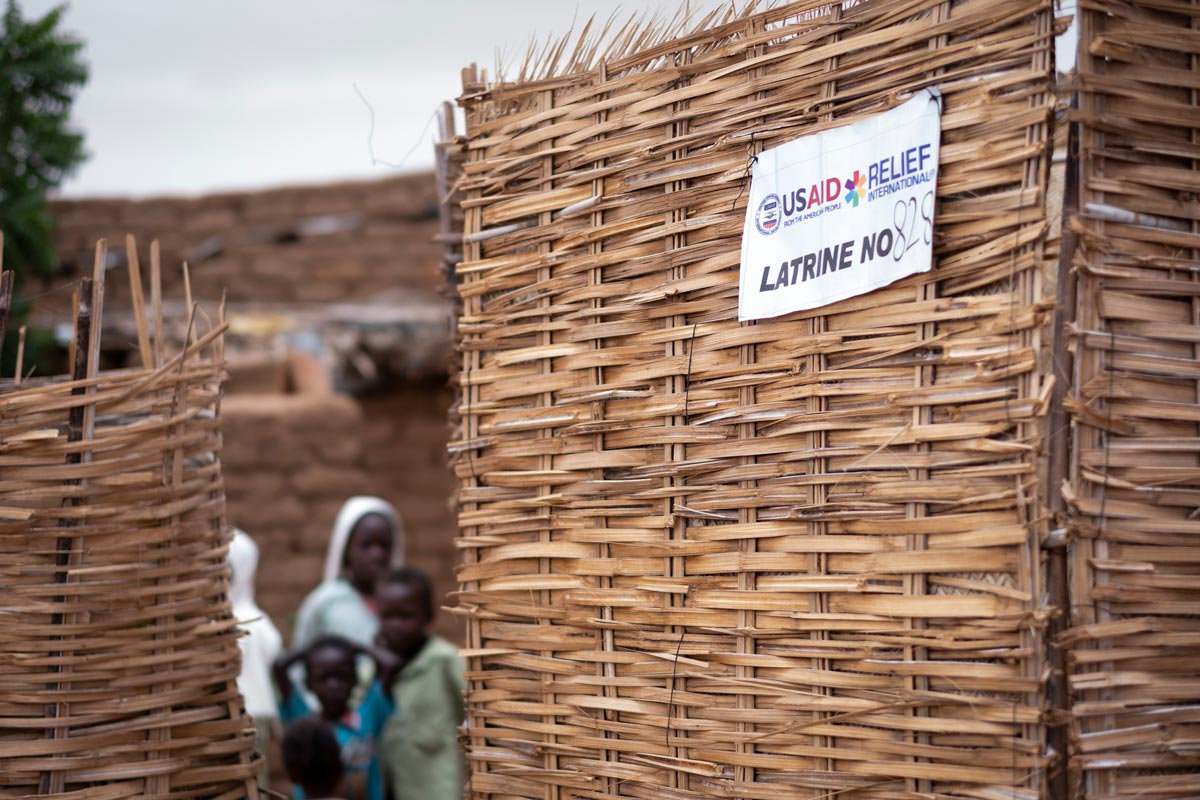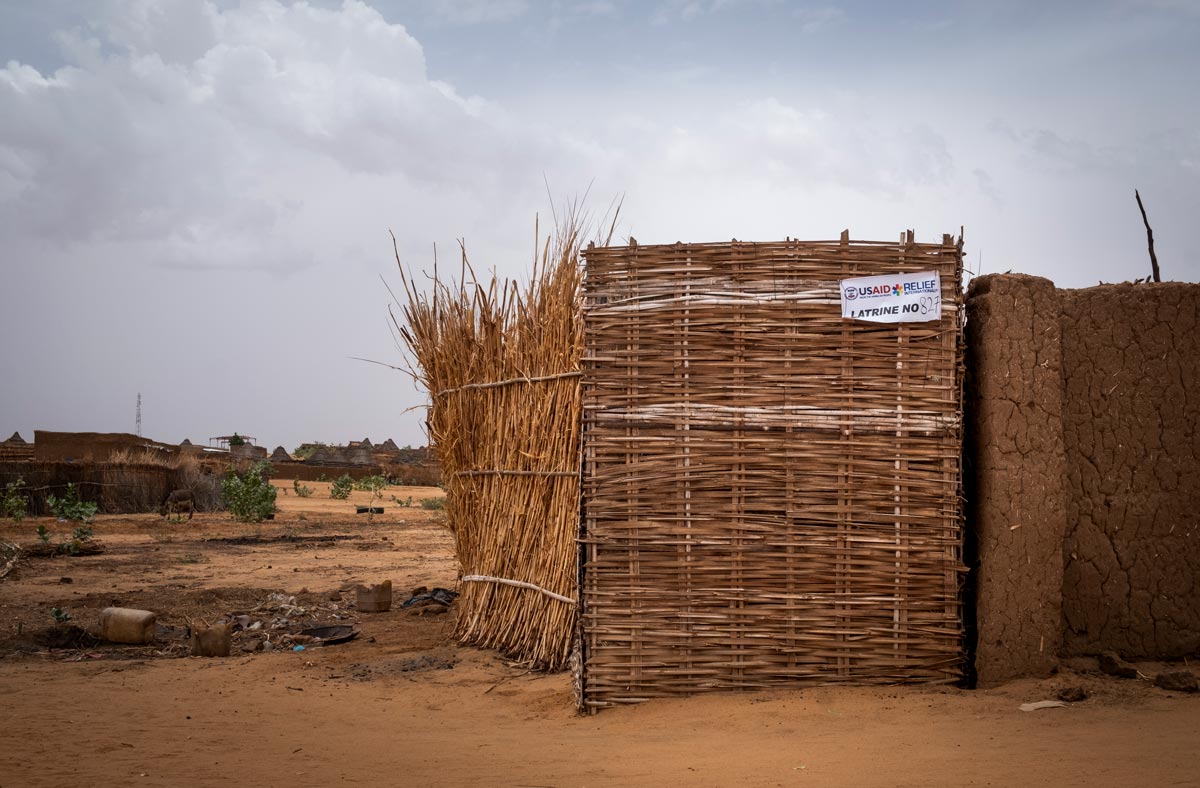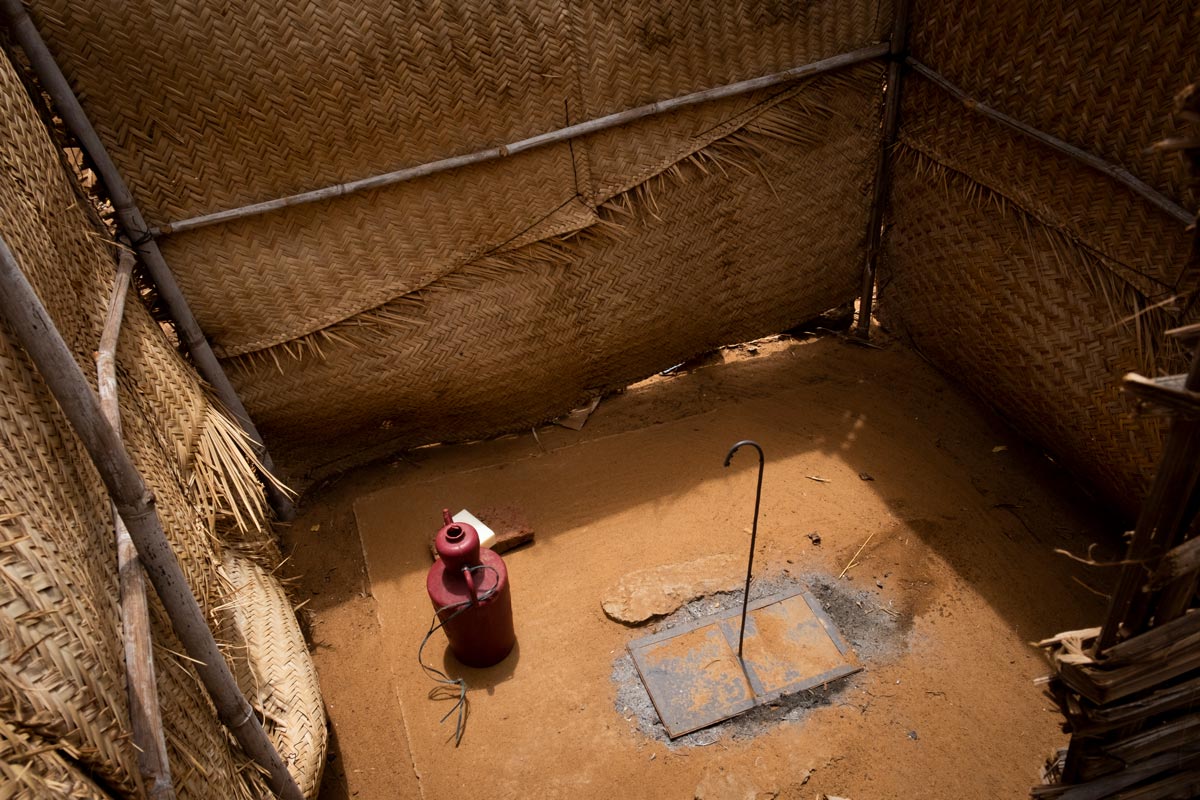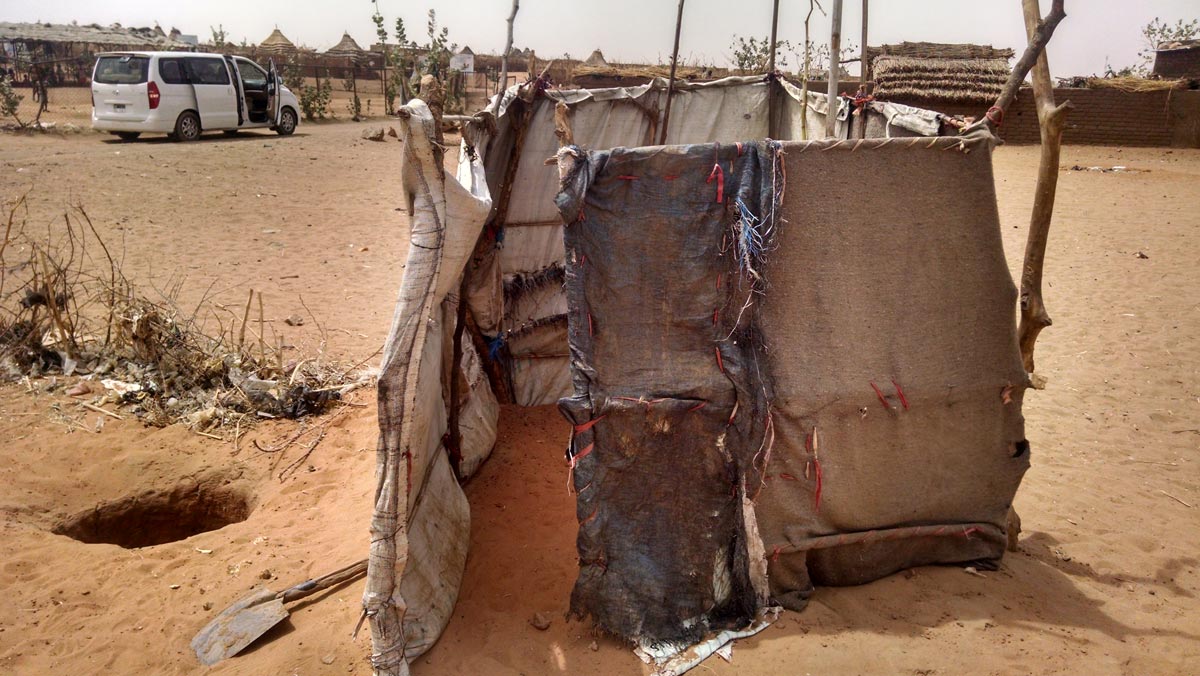It’s a quiet Saturday morning in Sudan’s Zamzam camp, the country’s largest camp for internally displaced people. Residents line up at the bakery to buy bread. Children pass by riding donkeys carrying loads of jerrycans or firewood for cooking, doing errands for their parents. Others sit on the sandy ground under the shade of one the few trees in the camp to escape the heat.
While the temperature outside hovers around 90 degrees, inside the camp’s plastic-coated latrines it’s at least ten degrees hotter. This is where disease thrives.
While the Darfur crisis has faded from global consciousness, thousands of people remain displaced and continue to die each year. But it’s not bombs or bullets that kill most people here now. It is perhaps an even deadlier killer: disease.
The bloody conflict in Darfur, which escalated in 2003, sparked a mass displacement across the region, which the United Nations, at the time, deemed the “world’s worst humanitarian crisis.” Zamzam camp materialized within a matter of weeks to support the hundreds of thousands of people pouring out of villages in northern Sudan, quickly surpassing the size of displacement camps in the country’s south. At least 200,000, and perhaps as many as 450,000 people died, as a direct result of the conflict in Darfur.
“When the first arrivals arrived to the area now known as Zamzam camp, there were either too little or, in some cases, no assistance available to them. It was in all senses of the word: an emergency,” shares Relief International’s Monitoring, Evaluation and Learning Coordinator Abebech Belayneh Worku.
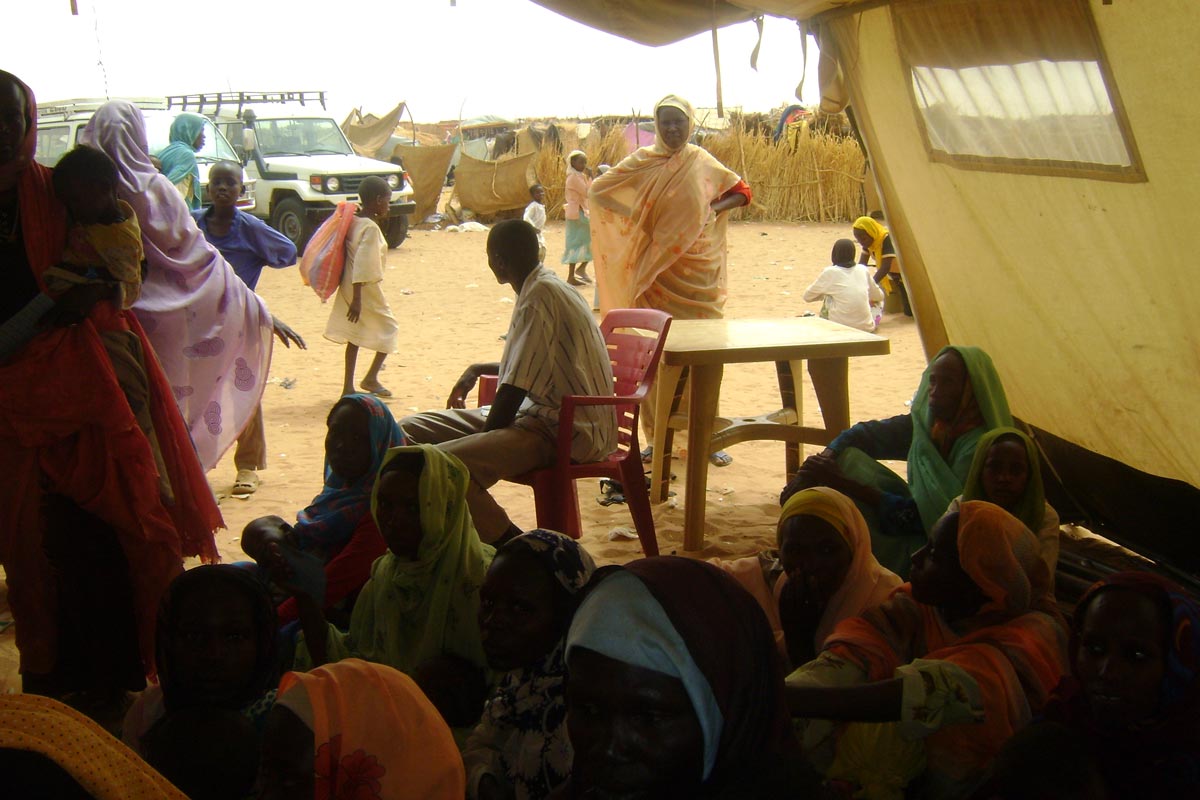
A view of Zamzam camp from Relief International's health clinic during the beginning of the crisis.
In the early days of the crisis, displaced families gathered by the thousands outside of the town of El Fasher. Few services existed as it was previously an agricultural area used to grow tobacco, millet, and other staple crops. People quickly began constructing structures out of sorghum stalks, sticks, and other locally sourced materials they could find. International aid organizations including Relief International partnered to launch a massive emergency response to deliver safe drinking water, shelter, food, and healthcare to thousands of newly displaced families in the area.
However, as the situation in Darfur began to improve to where it was no longer classified as an emergency, these same aid organizations shut down their clinics and distribution sites. At times, Relief International has been the only international aid organization operating inside the camp.
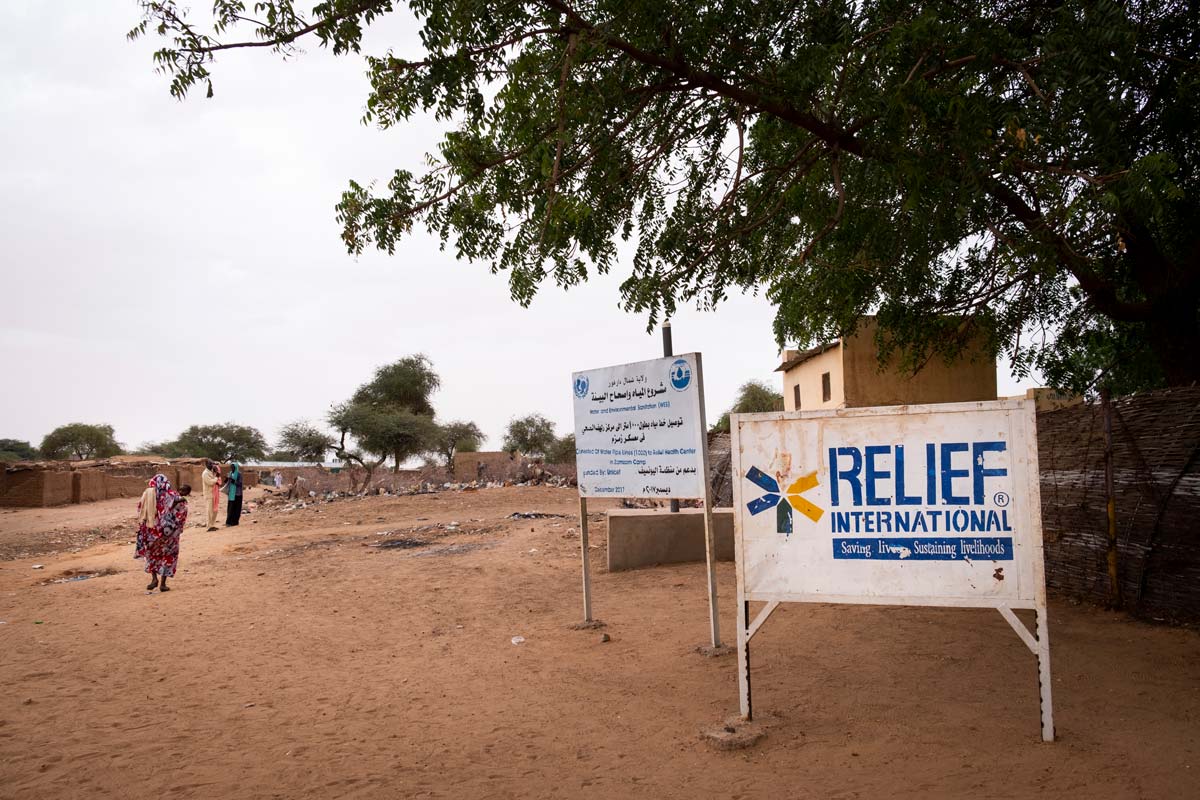
In recent years, permanent homes and structures have been constructed across Zamzam camp. This is what the camp looks like today.
“The reality is that the people of Zamzam are currently at the center of one of the world’s most protracted crises. For the majority of the camp’s residents, their homes and lives are now based in the community they’ve established here in Zamzam,” shares Abebech.
Relief International has operated continuously inside Zamzam camp since 2006, relying on our strong relationships with the camp’s residents to tackle issues facing the community.
One common complaint: the heat
It’s one of the first things that most visitors notice when they set foot in Zamzam camp. While some residents have developed systems to stay cool by taking refuge under shady trees or in their homes, the heat infiltrates all other aspects of life inside the camp. Households are often forced to wait at distribution sites in long queues outside under the burning sun. However, even that is preferable to the uncomfortable situation of using the plastic-covered latrines scattered across the camp.
Dusty, uncomfortable, and hot, these latrines are a breeding ground for disease. Some camp residents opt not to use these latrines at all, increasing the risk of a public health crisis. In developing countries, 80 percent of diseases are caused by unsafe water and poor sanitation, often brought on by inadequate facilities.
“If Relief International left Zamzam today, there would be a major disease outbreak within three months due to overcrowding and sanitation realities inside the camp,” claims Adam Bukhary, Relief International’s Monitoring & Evaluation Assistant in El Fasher.
Upon hearing this feedback, our teams on the ground worked alongside members of the local community to reach an alternative solution to the unwanted latrines. One resident suggested that the new latrines be fashioned out of reeds found across the camp to let air flow freely through the slats.
Nicknamed ‘The Galaxy’ after the eponymous smartphone, which is considered the latest and greatest technology by the camp’s residents, these new latrines are another form of innovative technology.
It features a moveable concrete slab above a hole dug three meters deep, which is twice as deep as erstwhile latrines and, therefore, prolongs the amount of time the latrine can be used. Once it’s time to move, residents are able to dig a new hole, lift the concrete slab, and relocate the entire latrine.
The Galaxy is constructed out of local materials found inside the camp and the surrounding area. In addition to being cooler, the woven technique also withstands heat better than the plastic sheeting, which often melted and needed frequent replacement.
While the woven design maintains user’s privacy, there’s no marked door on the Galaxy in order to keep them cool. This can make it difficult to tell if the latrine is in use. There’s an unwritten rule in the camp that when you are inside that you make a small noise. This can be achieved by clearing your throat, tapping on the plastic can that holds water or by holding a soft humming noise. An additional precautionary measure, users are also supposed to drag their feet across the coarse sand and call out before entering, just in case someone inside forgot about this important ritual. This system alerts them that someone is coming so that they can shout, “Occupied!”
